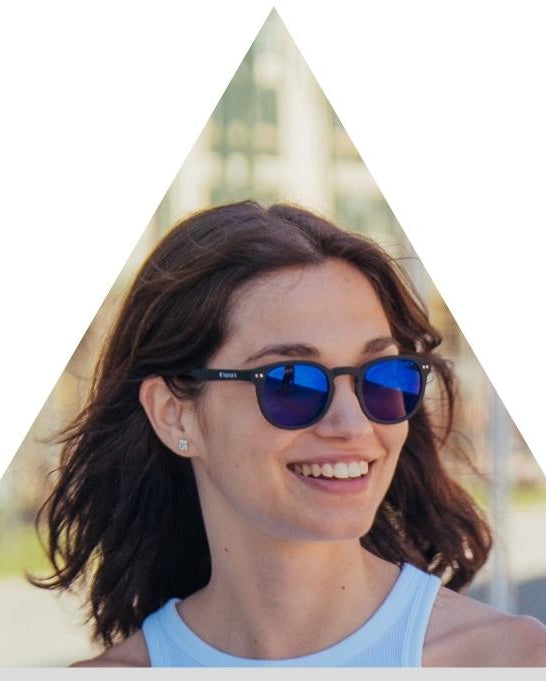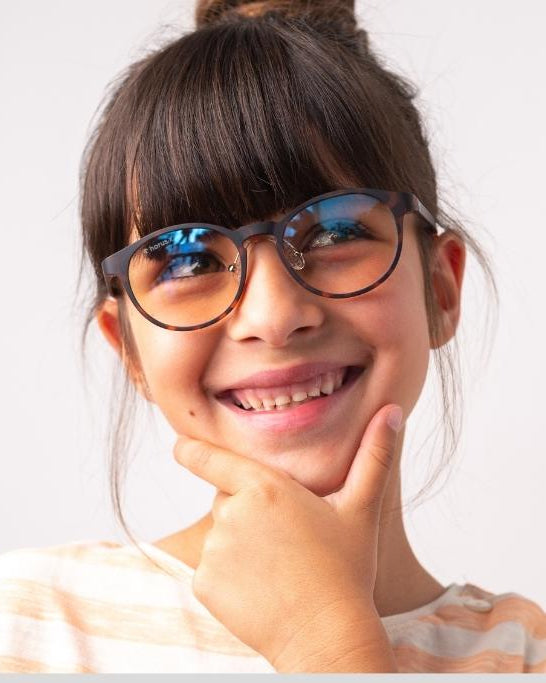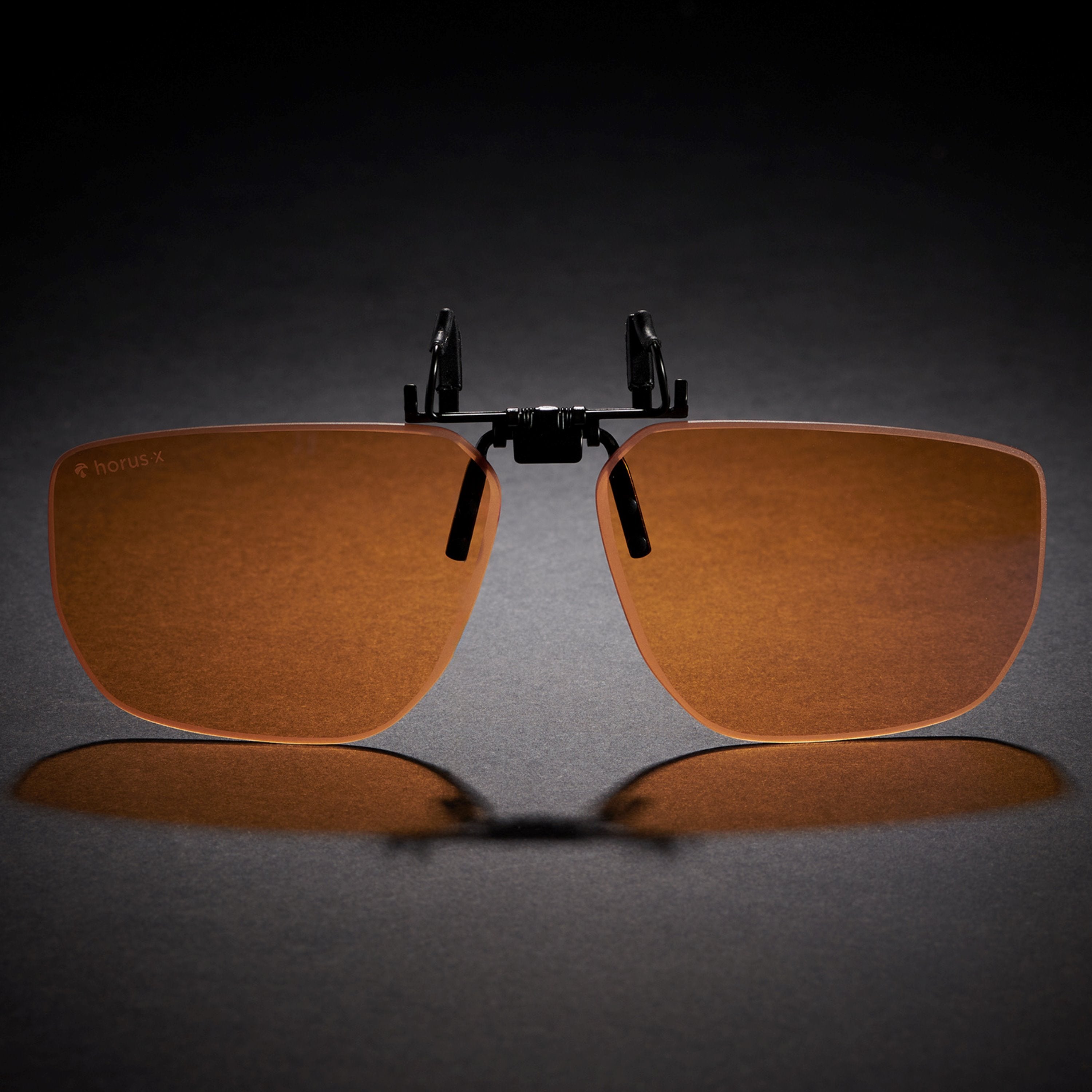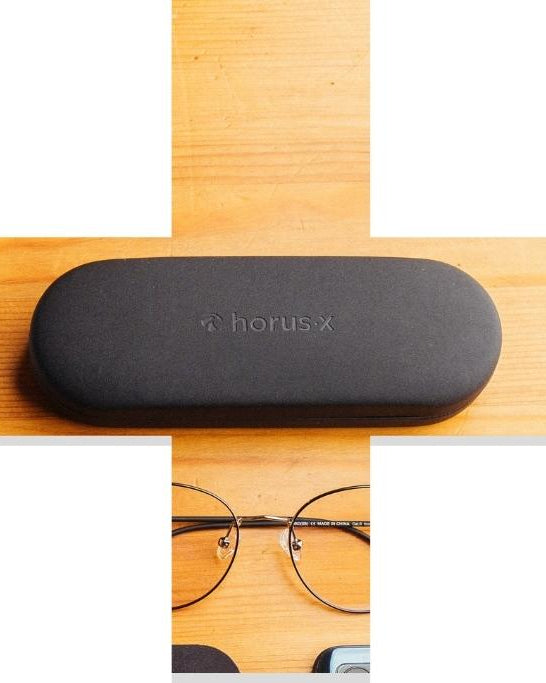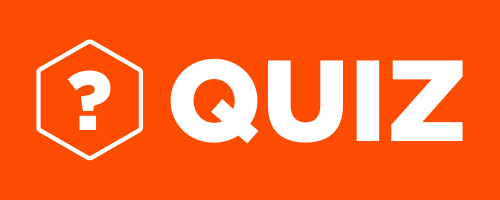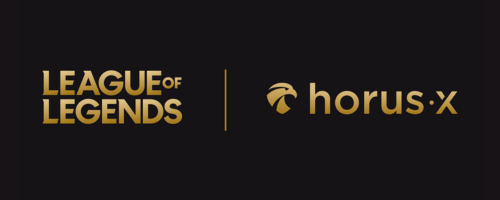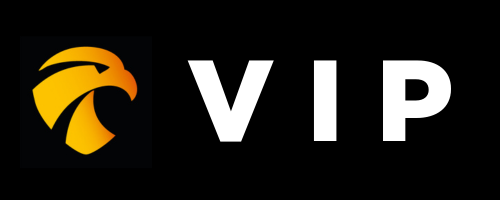What does blue light do to your eyes? Frequently Asked Questions about blue light
“The French government seems to confirm the harmfulness of blue light... While the University of Melbourne seems to affirm the opposite.”
“Is light really harmful, what does science really say?”
“Are we Are we being taken for fools?”
When filming a program for a National French television network, Horus X were asked this question.
We took this opportunity to delve deep into the science of blue light and answer the question “what does blue light do to your eyes?”
The science of blue light

There is a lot of information available on the impact of blue light from varying studies that have taken place all over the globe.
Some blue light glasses brands will lean on the alarmist studies as ammunition to sell their glasses, speaking in depth about the dangers of blue lights. If they’re to be believed blue light is more dangerous than purchasing an Xbox Series X/S just for the console exclusives.
But there is no real science in panic. We believe it’s important to be transparent and pragmatic, using studies from multiple institutions to paint a complete picture of the real risks of blue light and our use of digital screens.
Our findings on the potential dangers of blue light
It has been proven that in certain circumstances, blue light is harmful to the retina. For example, certain vulnerable groups like children, whose eyes have not yet fully developed. Or those who regularly use high-intensity bulbs in work – like headlamp flashlights.
However, as a general rule – short exposure to the blue light from screens and LED lighting doesn’t appear to be harmful to the retina of healthy adults.
Long exposure is a different kettle of fish. Studies are inconclusive on the long-term harmful impact on eye health, and scientific journals range from cautionary to dismissive.
It’s also important to note that the spectrum of blue light is not all equal. There are different levels of danger depending on where on the spectrum the blue light wavelength sits:
- 380-500 nanometers is the complete blue light spectrum
- Between 380-450 nanometers is the most dangerous part of the blue light spectrum
Blue light and sleep

Unlike some other topics around blue light, the impact on sleep has been definitively proven.
As per the American Academy of Ophthalmology:
“Blue light does affect the body’s circadian rhythm, our natural wake and sleep cycle. During the day, blue light wakes us up and stimulates us. But too much blue light exposure late at night from your phone, tablet or computer screen can make it harder to get to sleep.”
It’s therefore logical that this might also create long-term consequences, as a good night’s sleep is an important part of your overall health and wellbeing. When you’re exposed to blue light all day every day, you’re disrupting this rhythm and preventing rest.
We’ll discuss this in more detail below 👇
Limiting the impact of blue light
People who are regularly exposed to screens (that’s almost everyone), should work on reducing the amount of blue light they absorb daily. Luckily, there are multiple solutions to help with this.
Some are very effective: blue light filtering glasses (depending on the brand), and certain software that can be installed on computers or cellphone screens. Others, like screens that claim to limit blue light without any additional means of doing so, or blue light glasses brands that fail to provide information on its filtration levels, are less trustworthy.
Either way though, less blue light can only have a positive impact on our overall wellbeing. Meaning filtration always be part of our approach to any harbringer of artificial blue light.
So, building an eyewear brand that takes care of our well-being and our sleep was the obvious next step to Horus X.
Blue light and gaming

Unfortunately for all of us, gamers are particularly affected by blue light. We have large, bright screens, often a lot of LED light sources (because who doesn’t enjoy a good strip light and backlit keyboard as part of your gaming set-up), and will use them for hours more than the average person.
(I’ve heard they go outside…).
As gamers ourselves, we knew we had to specialize in providing protection for our fellow players. Hence, Horus X gaming glasses were born.
Question 1: I have two reliable sources. One says blue light is harmful, the other doesn’t. How do I know who to believe?

The French Ministry of Health, for example, clearly states that blue light can cause retinal damage.
The Ministry refers in particular to the report (1) of the National Agency for Food, Environmental and Occupational Health Safety (ANSES), which explains that light rich in blue does come with risks to the retina.
It is therefore important to distinguish the intensity, the duration of exposure, and especially the origin of the blue light source, to judge whether or not it is toxic to the eye 👇
a) Short exposure to blue light from digital screens
The intensity of the light emitted by digital screens is relatively low, so short exposure does not present a risk of eye damage.
b) Short exposure to other sources of blue light
The effects mentioned in the French Ministry of Health report are based on the effects from specific devices, classified as high risk. This includes flashlights, headlamps, certain toys or automobile headlights.
There appears to be a link between certain eye pathologies and exposure to these devices, particularly for more vulnerable demographics. Most of the light sources in this group are classed as high-intensity lights, meaning they put the retina at risk even when exposure is short.
c) Chronic or long-term exposure to any source of blue light
Chronic, meaning over several years, exposure to blue light has been shown to contribute to Age-related Macular Degeneration (AMD).
For example, Dora Adamopoulos (Eye doctor and medical advisor to the Vision Council), explains:
“a great deal of research is currently underway to determine its precise impact on the eyes and vision. One thing is certain: the blue-violet spectrum (415-455 nm) is particularly harmful (3) . It penetrates deeply and causes photochemical reactions likely to damage retinal cells, with a cumulative effect. The retina cannot be replaced; its alteration therefore leaves the eye vulnerable to harmful light and environmental factors, thereby increasing the risk of early development of ophthalmic disorders, such as AMD" (4)
These conclusions are based on studies that have taken into account exposure to both artificial and natural blue light. The blue light we absorb via the sun, for example, has very different characteristics to that of blue light from digital screens.
Aside from the impact on sleep, however, it seems that scientific literature still has no clear consensus on how toxic artificial light from screens has the potential to be.
As per the ANSES report:
“Due to the lack of data on the chronic effects of exposure to low doses of cold light (e.g., from screens), the level of risk associated with chronic exposure to blue-rich LEDs cannot yet be evaluated to date.”
d) Conclusion
Visible light emitted by digital screens and electronic devices is not intense enough to cause short-term damage to the retina. However, it definitely does impact sleep, and therefore leads to other health issues.
Several studies have highlighted a possible link between prolonged exposure to blue light and AMD. But there is no clear scientific consensus on this at present.
It is also important to note that beyond the dose of blue light received, the timing of exposure plays a crucial role, with studies showing an increased vulnerability of the retina to phototoxicity during the night.
Blue light from screens: The real impact on our health

Beyond the retina, it’s important to consider the rest of your body and how blue light affects it.
As we’ve already stated, there is an undeniable link between exposure to blue light and the disruption of the circadian rhythm.
What is the circadian rhythm?
The circadian rhythm is essentially your body clock, controlling your sleep-wake cycle over 24 hours.
Multiple studies agree that blue light disrupts this and the production of nocturnal melatonin – the sleep hormone that regulates your cycle and helps you to fall asleep. The University of California found that “exposure to blue light before bedtime also can disrupt sleep patterns as it affects when our bodies create melatonin.”
Across the board, these effects have been documented and the scientific community agree: blue light impacts sleep.
The dangers of less sleep
Unfortunately, less sleep impacts overall health and well-being and can have significant long-term effects.
Studies have found connections between less sleep and its impact on your immune system, increased risk of eye disease, the likelihood of developing Alzheimer’s, Type 2 diabetes, heart disease and sleep disorders.
With this in mind, the natural cycle appears to be blue light > less sleep > higher risk of disease. Therefore, even if blue light is not the direct cause of these long-term health issues, it is a factor that we can easily mitigate to reduce risk.
Important note: Some brands also discuss the risks of severe mental health issues and even suggest PTSD can be caused by exposure to blue light. While this has been examined in some studies, there is far from a definitive conclusion on the topic and often, discourse around it can be exaggerated to create a climate of fear and impulsive purchasing.
The subject is serious, and there is a potentially significant impact on our well-being, but we should not be afraid of screens either. A regular amount of exposure will not cause any considerable risks to our health.
Reducing blue light should be part of an overall betterment plan that looks at your diet and exercise, as well as reducing stress and general time spent in front of screens.
Question 2: Are different proposed solutions to protecting the human eye from blue light actually effective? Or is it all propaganda and we’re being taken for fools?

Certain studies have strongly emphasized the impact and effectiveness of different means of filtering blue light.
For example, using filtration apps or software which reduces the color temperature and brightness of screens, limiting the amount of blue light emitted, has been concluded as only marginally effective. And screens that claim to limit their blue light emissions have no impact whatsoever.
But the impact of anti-blue light glasses is where studies start to differ.
It’s generally agreed that in terms of efficiency, there’s a big difference between lenses treated by an optician and lenses designed specifically to filter blue light. This also holds true across different blue light glasses brands, depending on filtration levels.
Glasses designed specifically to target blue light are usually far more effective at filtration than ophthalmic-treated, multi-purpose lenses.
ANSES found: “These yellow-orange glasses filter between 28% and 59% (depending on the models tested) of the phototoxic blue radiation emitted by lighting and LED screens, compared to 7% to 12% for treated ophthalmic lenses)".
👉Psssst…. Just an FYI…. Horus X lenses filter up to 85% of the most harmful blue light - much higher than almost all leading brands!
Likewise, other studies have found that “BB spectacle lenses can reduce the symptoms of eye strain in individuals who use digital devices.”
Blue light glasses: Yay or nay?
In conclusion, anti-blue light glasses from opticians often offer far too limited effectiveness, and anti-blue light glasses brands don’t all offer the same level of filtration.
According to studies, filtering blue light increases the quality and quantity of sleep, making blue light blocking glasses beneficial.
It’s also worth considering that some of the brands tested for these studies had such low levels of filtration that they are almost certainly going to produce a negative or null effect, rendering the observation somewhat moot.
Regulation in the blue light glasses industry
Simply put, there is none.
This is an issue as no standard specifically governs the minimum filtration rates that blue light glasses should offer. Each brand can provide the level (and level of information) it wishes, particularly for non-prescription glasses.
Often, this means filtration that is far too weak to have any meaningful impact.
That was what inspired us to create our own – with explicit information on exactly how much blue light is filtered (much higher than other brands).
Use several means of filtering blue light for maximum impact
- Download an app like F.lux for easy and effective reduction of light intensity on computer screens.
- Change the backlighting of devices to a more ambient and warmer yellow or orange over stark white light.
- Wear blue light computer glasses to filter sources that don’t have their own means (TV’s, LED bulbs etc.)
Glasses are always the preferable option as they cover the entire visual field, rather than only a part of it.
Question 3: Is it risky to put a blue light treatment on a pair of prescription lenses?
🌞 Exposure to blue light upon waking is important as it kickstarts your circadian rhythm, letting it know you’re in the ‘wake’ part of the sleep-wake cycle.
That means going outside and staring at the sun (if it’s there) can actually help kick start your day by improving your mood and cognitive functions.
Therefore, if your prescription lenses have a blue light filter, it can actually negatively impact your ability to get that important natural blue light.
However, given the lower effectiveness of treatments on prescription lenses, it shouldn’t have too much of an impact.
Question 4: Here's a video that shows us that some glasses don't really block blue light. How do we know which ones really work?
As a lay person it's hard to know which glasses actually do deliver on their promised filtration rates. Or, if they fail to mention their filtration rates, if they’re effective at all in blocking blue wavelengths.
But there are some little tricks to tell if your glasses have the proper blue light filtration they should:
- There should be a slight bluish reflection on the glasses. This also suggests an anti-glare coating has been applied which is another beneficial measure we recommend (and one that all our glasses have!)
- The presence of pronounced coloring or tinting on the lenses. Blue light glasses can range from clear lenses to yellows and oranges, or in some cases, even a dark red. The tint on the glass greatly depends on the brand and treatment. But generally speaking, the darker the glass the more blue light is filtered. However, as there are different processing technologies, two brands could claim to filter the same amount of blue light but have differently tinted lenses.
The best way to know the actual filtration rate is to ask the manufacturer or conduct your own independent test with a laboratory. A reputable brand should be able to return to you with plenty of information and evidence of its filtration.
Wishy washy answer? Wishy washy filtration.
What about these blue light videos?
These videos are not created by experts (usually). We don’t mean to demean TikTokkers – we spend plenty of time doomscrolling on the platform, but they usually use the same tricks they themselves have seen on Tik Tok to show the presence of blue light.
There are issues with this.
Some brands, for example, will come with a pen and card for you to “test” and see the filtration yourself. Unfortunately, this method isn’t reliable as the pens they use to “prove” the lack of blue light filtration are actually usually UV light pens and therefore provide a “false positive” as most glasses nowadays offer 100% filtration.
Likewise, they fail to take into account that we can split the spectrum of blue light into two parts – harmful and ultra-harmful. Often these videos only look at the ultra-harmful spectrum (which should also be filtered!) and fail to consider the bigger picture.
Question 5: If you had to give one piece of advice on how to protect our eyes, what would it be? Aren’t all these filters really just masking the real problem: we spend too much time on screens?

At Horus X we have dedicated a lot of time and attention to this. We believe in reducing screen time based on age, even though if we’re honest… we don’t think anyone is actually sticking to the recommended screen times.
We understand why.
Screens are addictive and armies of developers and engineers are designing ever more powerful algorithms to make us even more addicted. In short, we have almost no chance of reducing our screen consumption if we do not put serious safeguards in place.
In the team, for example, some members use the “Digital Well-being ” application on Android, in order to limit the time spent on certain apps (like Instagram for example).
But no one expects you to completely ban screens from your life. We recommend:
- No screens before age 3 (impact on cognitive development)
- 1 hour per day up to 6 years old,
- 1 to 2 hours per day up to 12 years old, with parental supervision
- 2 to 4 hours per day for adolescents
For adults and seniors, it is recommended to reduce exposure to reasonable limits.
Try to have at least an hour before bed where you’ve turned off all screens and put your phone down, to allow your body time to relax into sleepiness.
You can also reduce the amount of blue light throughout your home in the evenings by setting timers to turn your lights warmer and dimmer as the night goes on, aiding the feeling of preparing for bedtime.
Disconnecting from screens sends your body signals that the day is winding down and you’re ready for sleep.
Reducing screen exposure:
We recommend:
- Choosing phone calls over video calls where possible, and try to chat when walking so you’re not staring at the screen at the same time. Plus, extra cardio!
- When working on screens for a long time, follow the 20/20/20 rule. That means taking a rest every 20 minutes to look toward an object 20 feet away for at least 20 seconds. This breaks up your consistent staring at a close, fixed object and reduces digital eye strain, dry eye and blurred vision.
But above all else, we believe in the power of blue light glasses and that they can only have a positive impact.
Stéphane GUYOT
Co-founder Horus
References
- Effects on human health and the environment (fauna and flora) of light-emitting diodes (LED) ANSES opinion Collective expert reports April 2019 - Scientific edition
- ibid.
- Arnault, E., Barrau, C. et al. Phototoxic action spectrum on a retinal pigment epithelium model of Age-related Macular Degeneration exposed to sunlight normalized conditions. PlosOne, 2013; 8(8), http://journals.plos.org/plosone/article?id=10.1371/journal.pone.0071398
- Points of View - International Review of Ophthalmic Optics Special Edition - Collection of articles from 2011 to 2015
- Brainard GC, Hanifin JP, Greeson JM, Byrne B, Glickman G, Gerner E, Rollag MD [2001]. Action spectrum for melatonin regulation in humans: evidence for a novel circadian photoreceptor. J Neurosci 21(16):6405–6412.
- Thapan K, Arendt J, Skene DJ [2001]. An action spectrum for melatonin suppression: evidence for a novel non-rod, non-cone photoreceptor system in humans. J Physiol 535(Pt 1):261-267.
- > Chang, Anne-Marie, Nayantara Santhi, Melissa St Hilaire, Claude Gronfier, Dayna S. Bradstreet, Jeanne F. Duffy, Steven W. Lockley, Richard E. Kronauer, and Charles A. Czeisler. 2012. “Human Responses to Bright Light of Different Durations.” The Journal of Physiology 590 (13): 3103-12. https://doi.org/10.1113/jphysiol.2011.226555.
> Rahman, Shadab A., Melissa A. St Hilaire, Anne-Marie Chang, Nayantara Santhi, Jeanne F. Duffy, Richard E. Kronauer, Charles A. Czeisler, Steven W. Lockley, and Elizabeth B. Klerman. 2017. “Circadian Phase Resetting by a Single Short-Duration Light Exposure.” JCI Insight 2 (7): e89494. https://doi.org/10.1172/jci.insight.89494
> Gronfier, Claude, Kenneth P. Wright, Richard E. Kronauer, Megan E. Jewett, and Charles A. Czeisler. 2004. “Efficacy of a Single Sequence of Intermittent Bright Light Pulses for Delaying Circadian Phase in Humans.” American Journal of Physiology. Endocrinology and Metabolism 287 (1): E174-181. https://doi.org/10.1152/ajpendo.00385.2003
> Rimmer, DW, DB Boivin, TL Shanahan, RE Kronauer, JF Duffy, and CA Czeisler. 2000. “Dynamic Resetting of the Human Circadian Pacemaker by Intermittent Bright Light.” American Journal of Physiology. Regulatory, Integrative and Comparative Physiology 279 (5): R1574-1579. https://doi.org/10.1152/ajpregu.2000.279.5.R1574 - Effects on human health and the environment (fauna and flora) of light-emitting diodes (LED) - ANSES opinion (Collective expert reports April 2019 - Scientific edition): Page 8 / 27
- https://pubmed.ncbi.nlm.nih.gov/35189549/
- https://www.nih.gov/news-events/nih-research-matters/lack-sleep-middle-age-may-increase-dementia-risk
- https://pubmed.ncbi.nlm.nih.gov/25188896/
- https://www.cochrane.org/news/blue-light-filtering-spectacles-probably-make-no-difference-eye-strain-eye-health-or-sleep
- Lian Y, Lu W, Huang H, Wu G, Xu A and Jin W (2022) The Long-Term Effect of Blue-Light Blocking Spectacle Lenses on Adults' Contrast Perception. Forehead. Neuroscience. 16:898489. doi: 10.3389/fnins.2022.898489
- Effects on human health and the environment (fauna and flora) of light-emitting diodes (LED) - ANSES opinion (Collective expert reports April 2019 - Scientific edition): page 85 / 424
- https://archive.cdc.gov/#/details?url=https://www.cdc.gov/niosh/emres/longhourstraining/light.html



